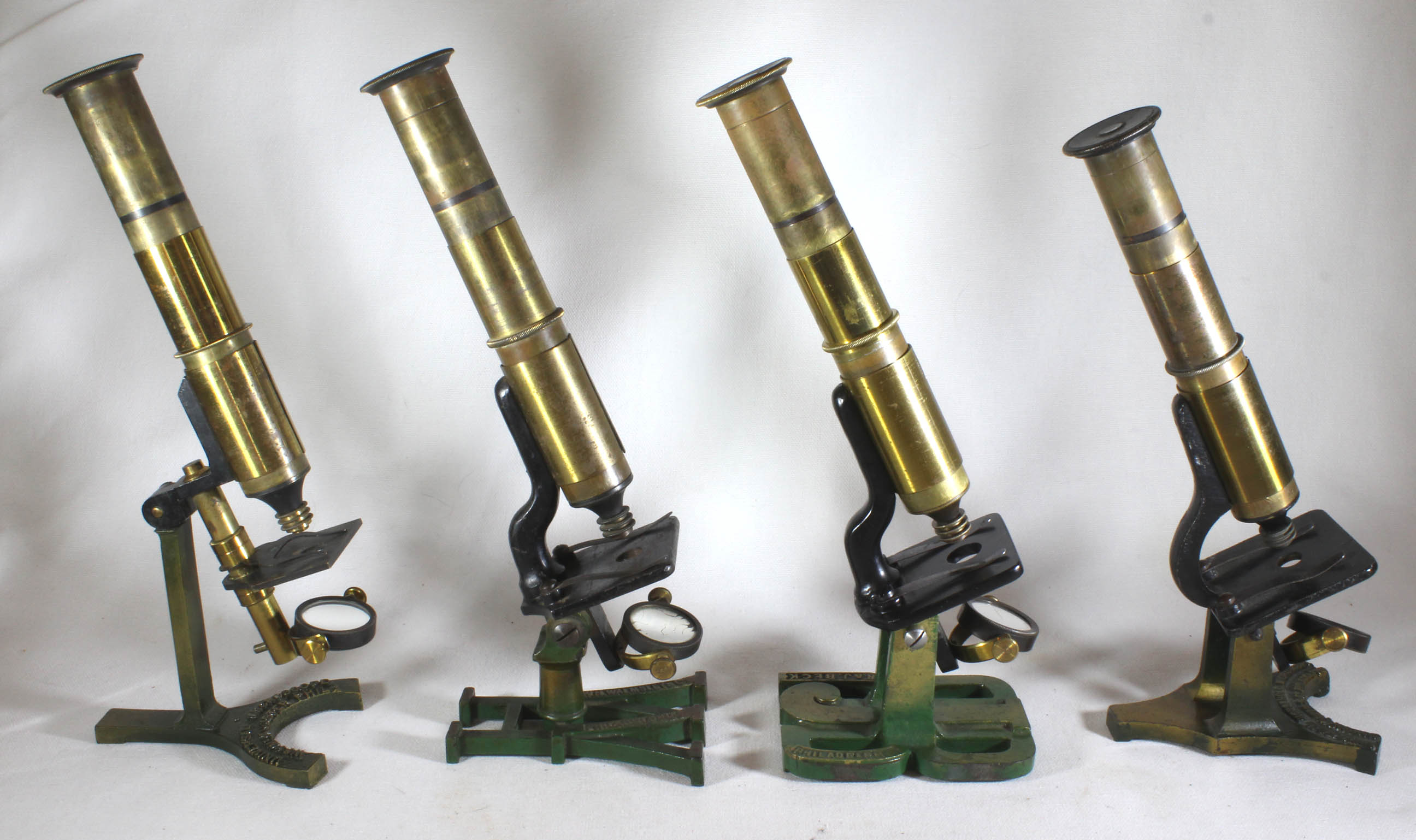MICROSCOPE-ANTIQUES.COM © 2013-15.
THE 'UNIVERSAL' AND 'HOUSEHOLD' MICROSCOPES
DATES: c. 1867-1900'S
**CLICKING ON MOST PICTURES WILL GIVE MORE IMAGES AND INFORMATION**
**CLICKING ON MOST PICTURES WILL GIVE MORE IMAGES AND INFORMATION**
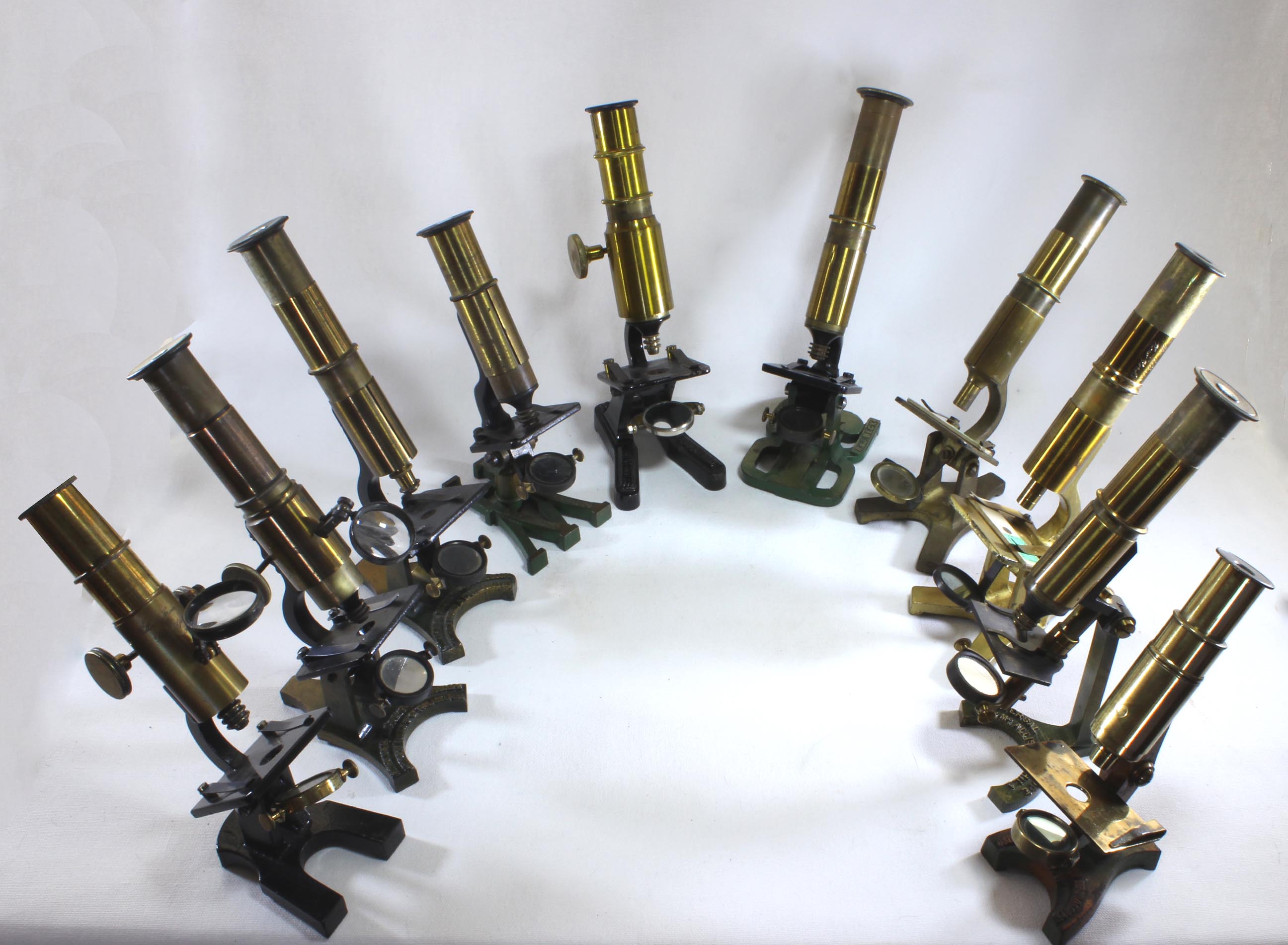
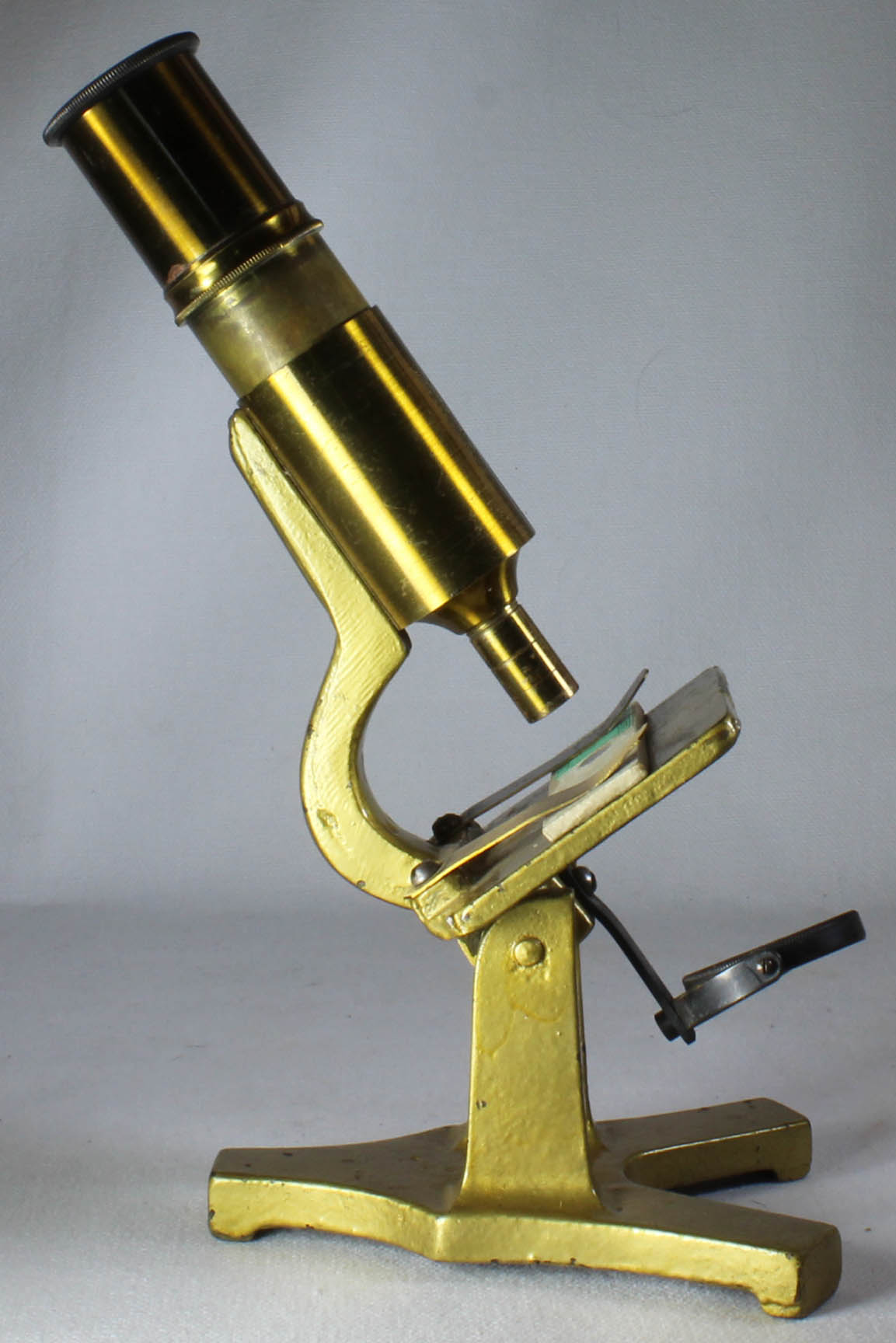
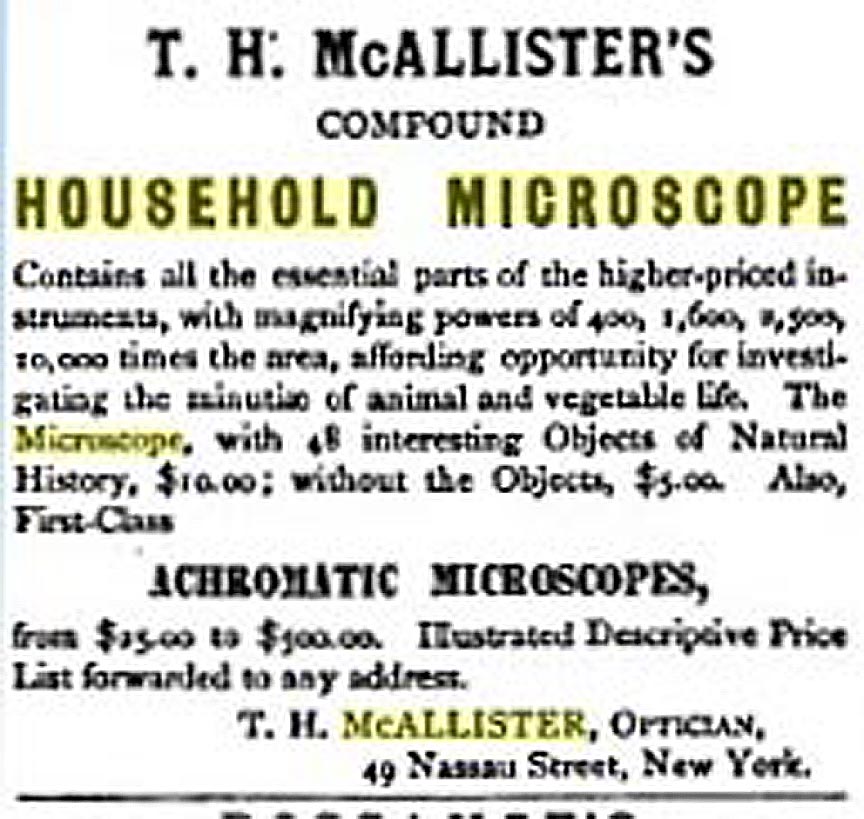 T. H. McALLISTER'S ORIGINAL 'HOUSEHOLD MICROSCOPE' (c. 1867- (?)1898):
T. H. McALLISTER'S ORIGINAL 'HOUSEHOLD MICROSCOPE' (c. 1867- (?)1898):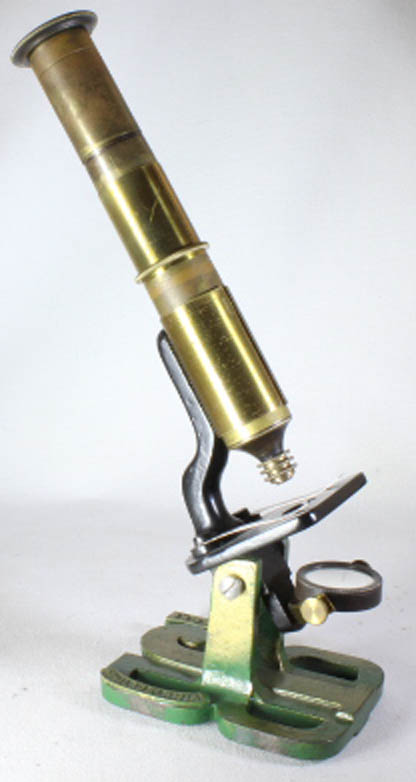
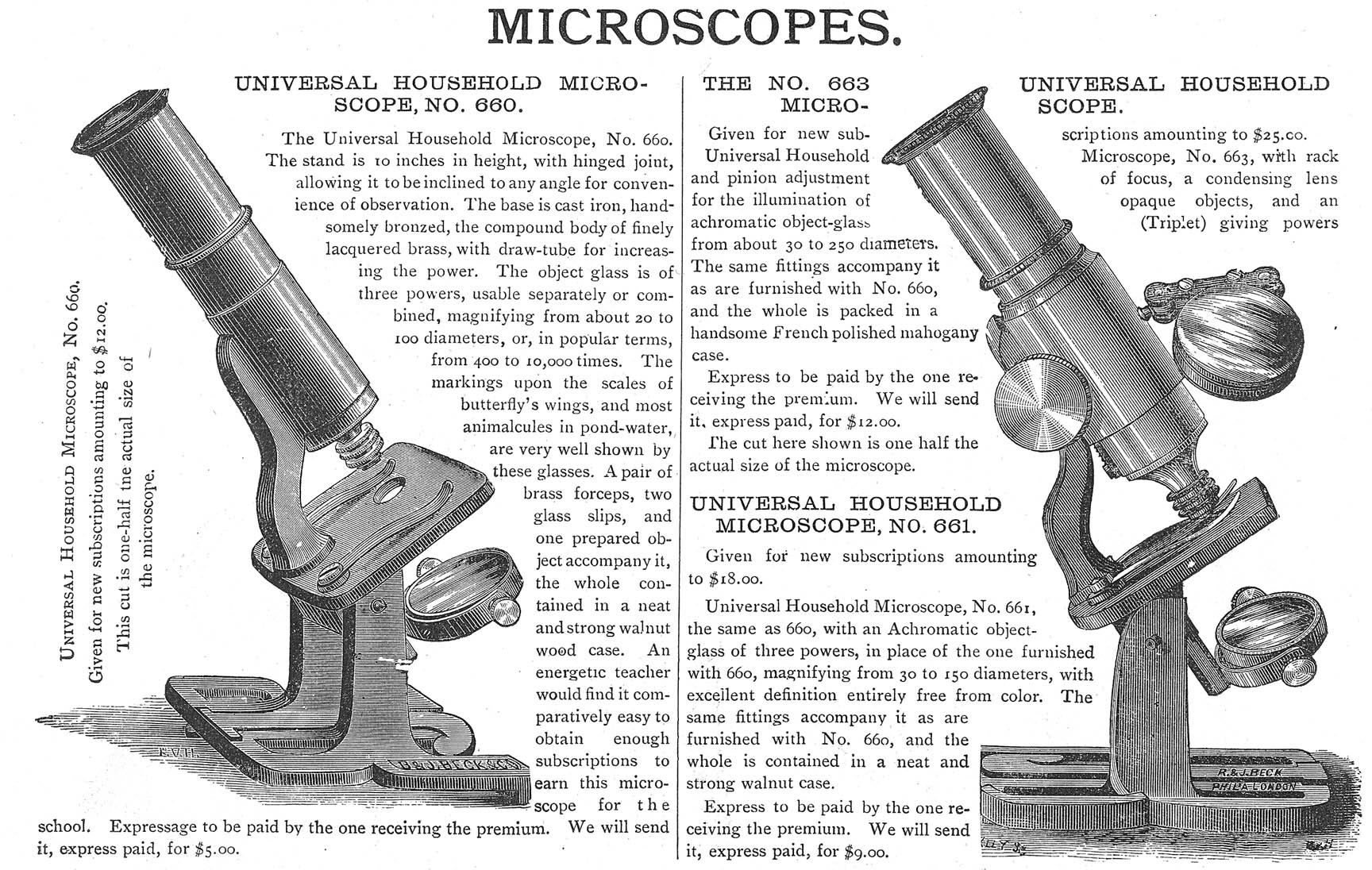 R. & J. BECK'S 'UNIVERSAL HOUSEHOLD MICROSCOPE' (c. 1879-c. 1885):
R. & J. BECK'S 'UNIVERSAL HOUSEHOLD MICROSCOPE' (c. 1879-c. 1885): 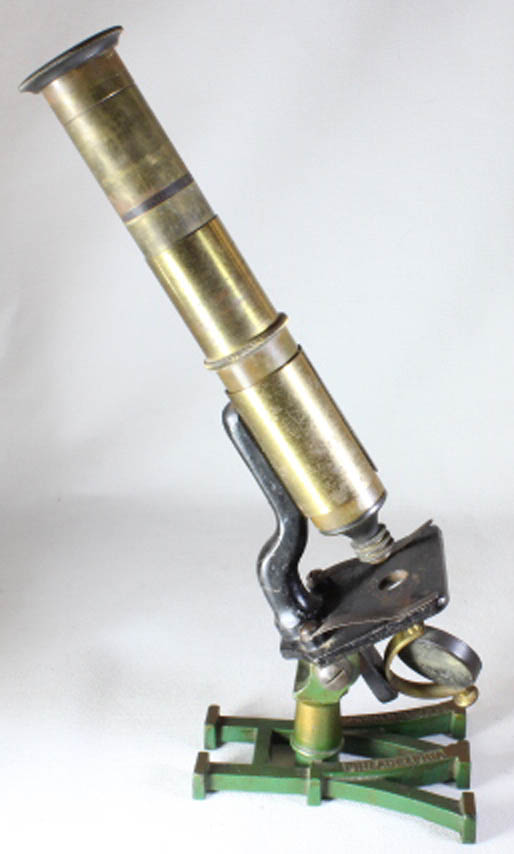 W. H. WALMSLEY HOUSEHOLD-TYPE MICROSCOPE (c. 1884-1889):
W. H. WALMSLEY HOUSEHOLD-TYPE MICROSCOPE (c. 1884-1889):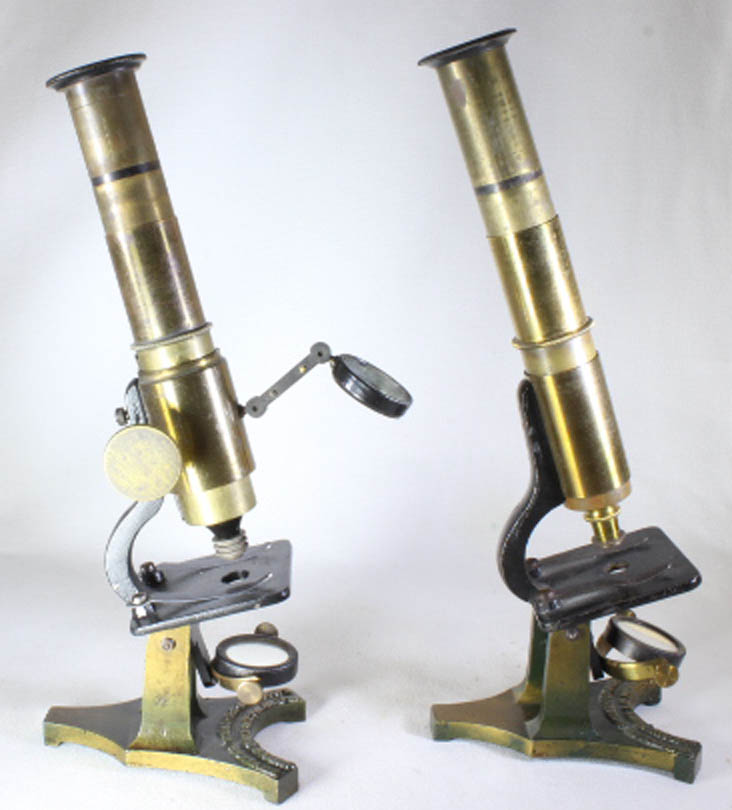 QUEEN'S 'UNIVERSAL HOUSEHOLD MICROSCOPE' (c. 1885-1890(?):
QUEEN'S 'UNIVERSAL HOUSEHOLD MICROSCOPE' (c. 1885-1890(?): 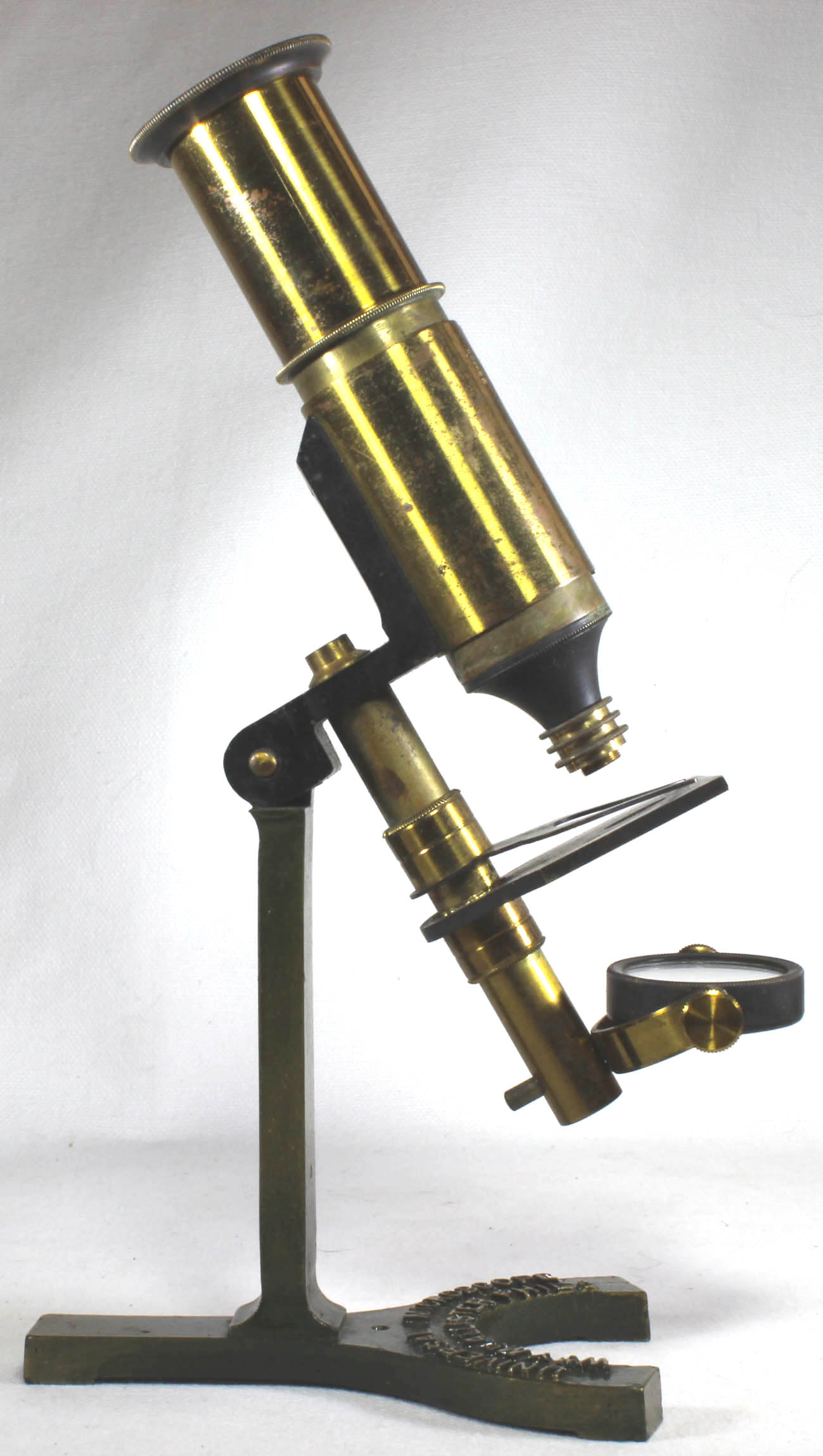 W. Y. McALLISTER'S 'UNIVERSAL MICROSCOPE' (? 1870'S-1882):
W. Y. McALLISTER'S 'UNIVERSAL MICROSCOPE' (? 1870'S-1882): 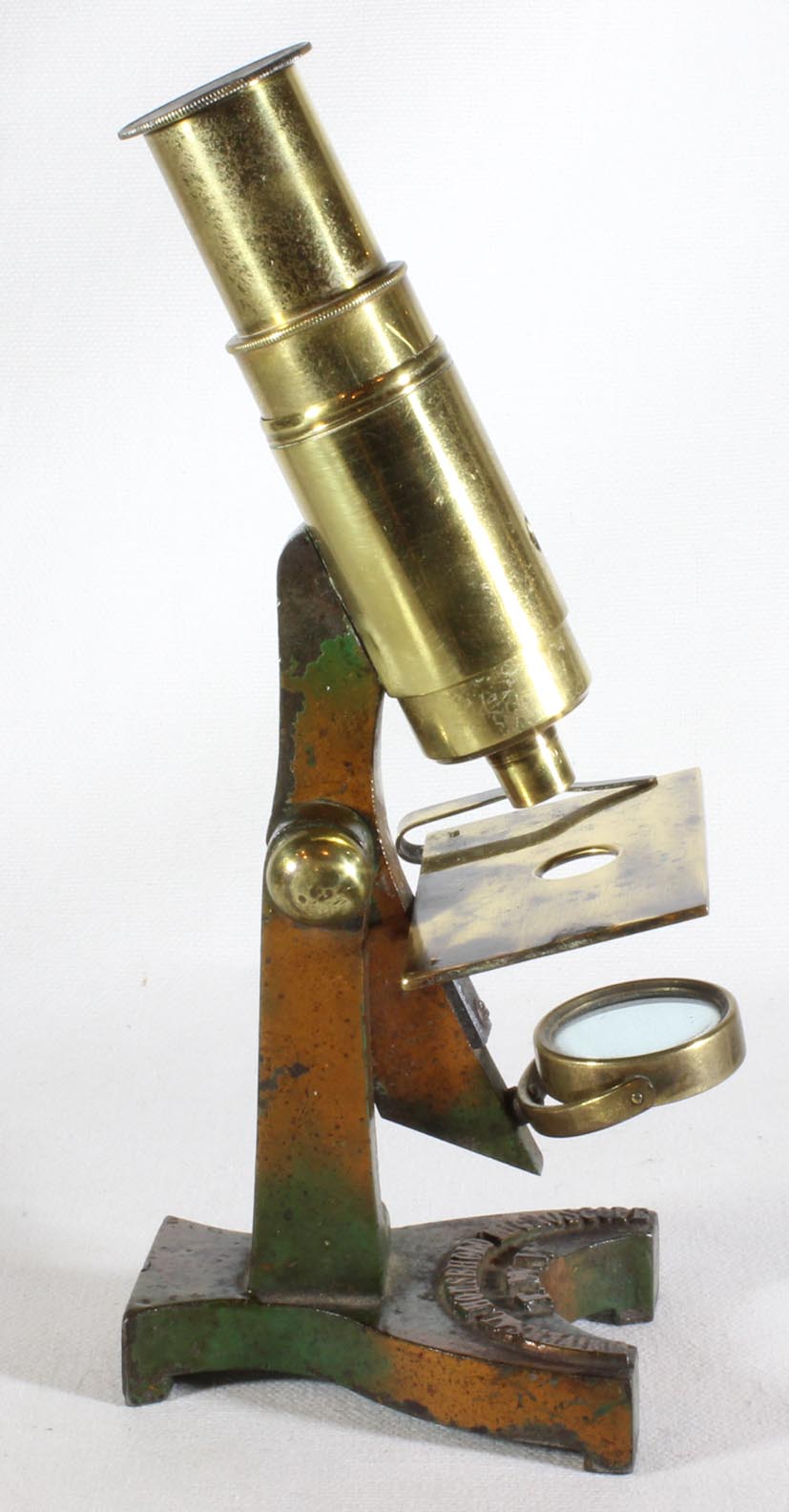 F.W.W. 'UNIVERSAL HOUSEHOLD MICROSCOPE'(?c. 1887-1912):
F.W.W. 'UNIVERSAL HOUSEHOLD MICROSCOPE'(?c. 1887-1912): Universal Household Microscope, F.W.W.It has a push/pull focus, and a flat substage mirror. It has an inclination joint in a Lister-limb pattern. The mirror is supported in a gimbaled support, but is fixed in location. There is no draw tube. It was almost certainly a French Import, made for the American Market. The objective is not divisible. A single remaining stage clip screws to the underside of the stage. When vertical, the bottom of the inclining limb meets the bottom of the pillar in a matching angular cut, thus preventing it from going past vertical when returning from an inclined position. This microscope was likely sold by F.W.Woolworth.
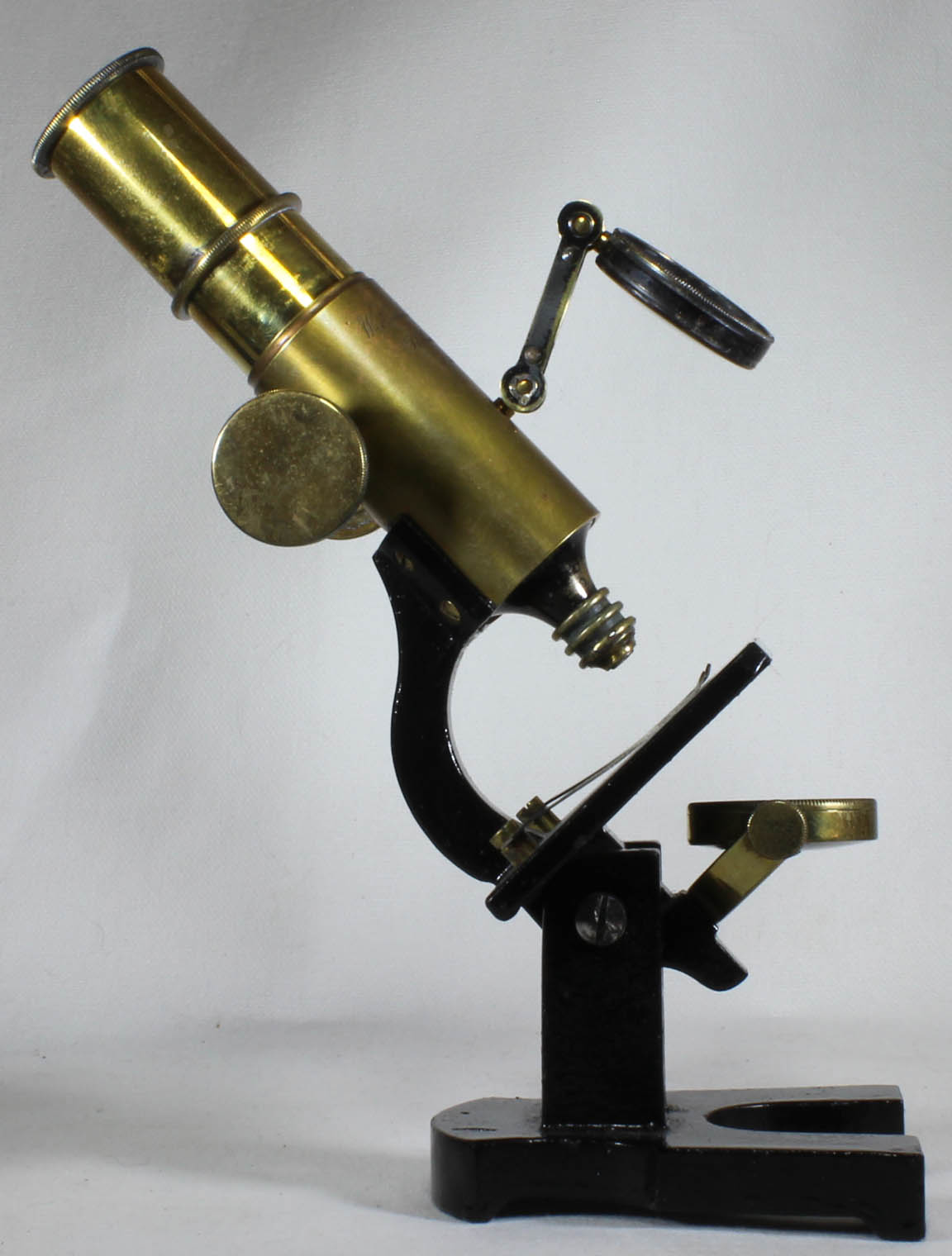 WILLIAMS, BROWN AND EARLE HOUSEHOLD-TYPE MICROSCOPE(c. 1900(?):
WILLIAMS, BROWN AND EARLE HOUSEHOLD-TYPE MICROSCOPE(c. 1900(?):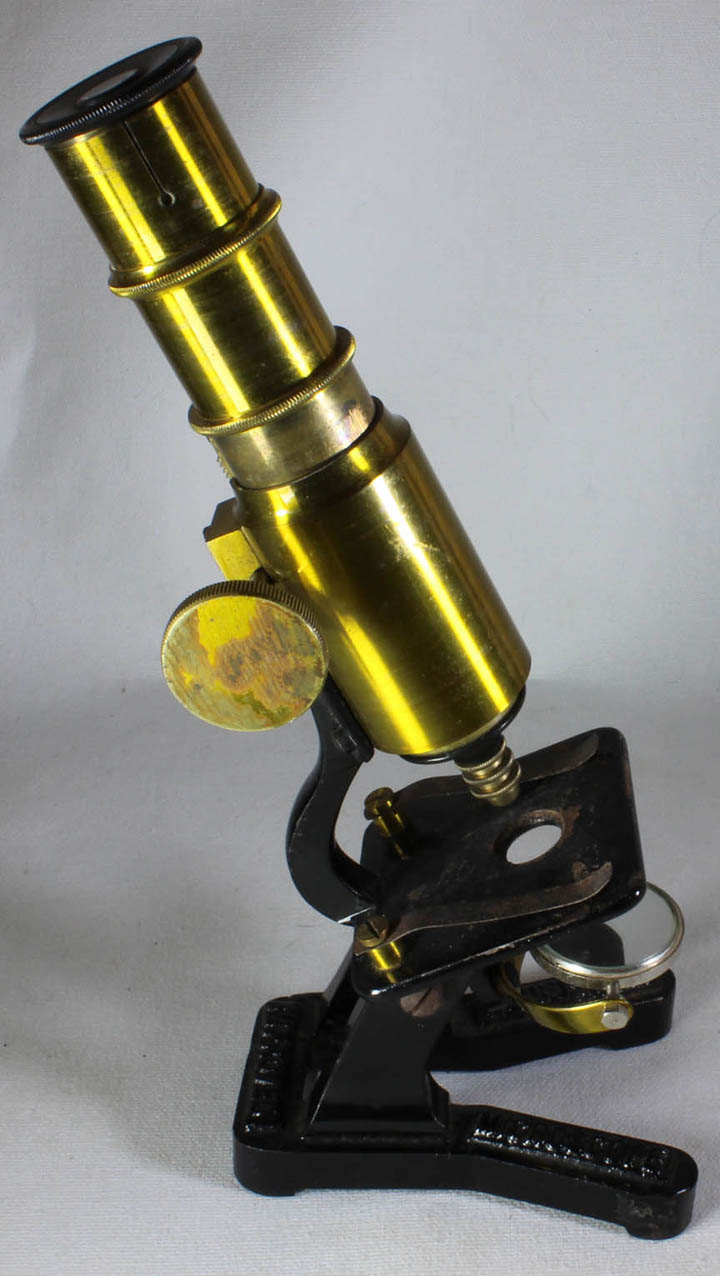 'IMPROVED HOUSEHOLD MICROSCOPE' (maker unknown, c. 1st Qtr 20th C):
'IMPROVED HOUSEHOLD MICROSCOPE' (maker unknown, c. 1st Qtr 20th C): 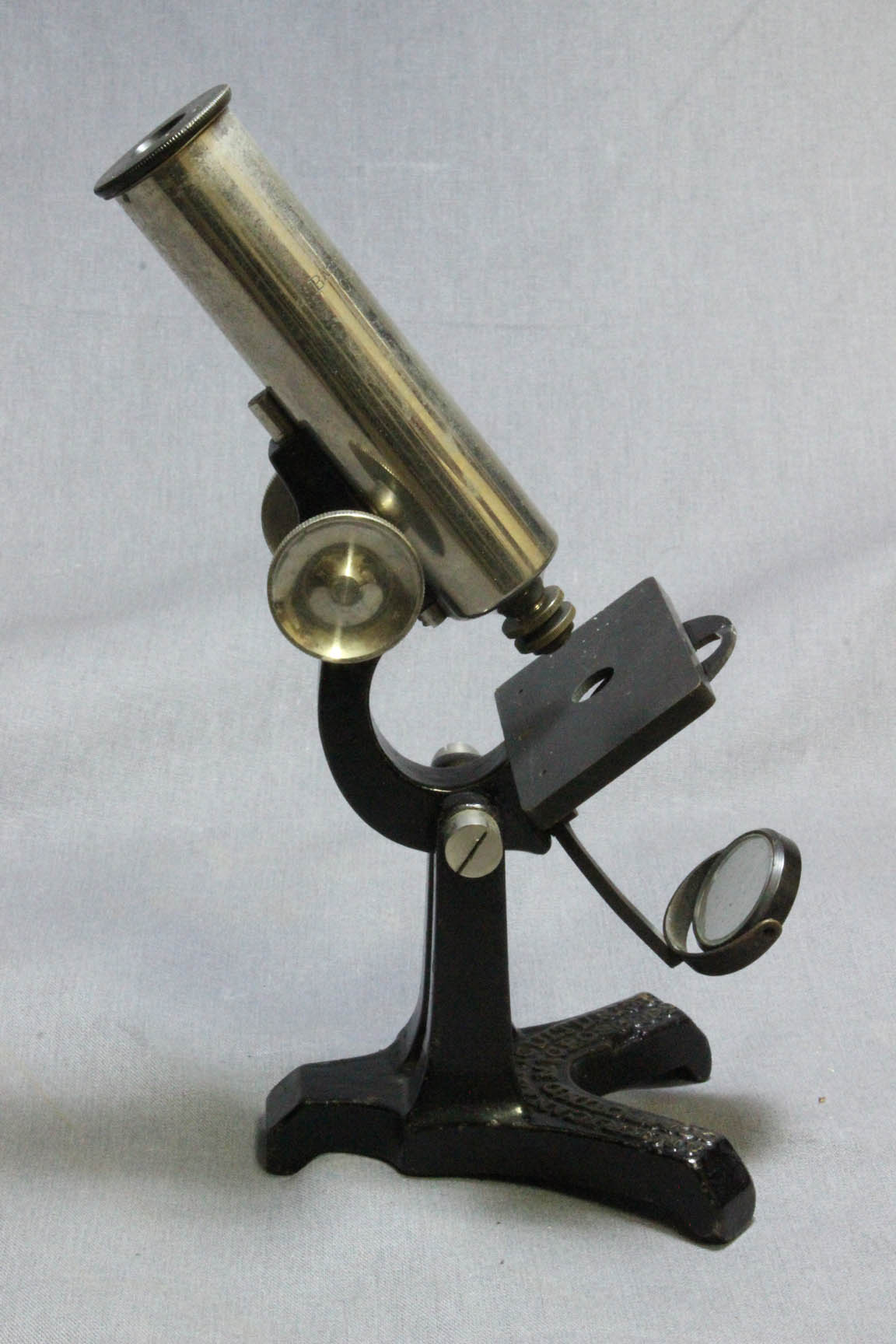 'AMERICAN AGRICULTURIST COMPOUND MICROSCOPE' (Made by Bausch & Lomb for the Orange Judd Company, c. 1879-1886):
This microscope is of similar proportions to the other examples shown on this web page. It differs though in several features. Firstly, it is at least partly, American made. Second, it has a nickel-plated main optical tube. Another difference is that their is a substage wheel of apertures that is made of hard rubber, not metal. Most others do not have a substage wheel of apertures and none were made of hard rubber. Although the optical tube is focused with rack and pinion, this rack differs from the others in that it is attached to the optical tube, and has a profile similar to the Zeiss microscopes of the time. This arrangement is much more stable than the rack and pinion arrangements of the other 'household' models.
'AMERICAN AGRICULTURIST COMPOUND MICROSCOPE' (Made by Bausch & Lomb for the Orange Judd Company, c. 1879-1886):
This microscope is of similar proportions to the other examples shown on this web page. It differs though in several features. Firstly, it is at least partly, American made. Second, it has a nickel-plated main optical tube. Another difference is that their is a substage wheel of apertures that is made of hard rubber, not metal. Most others do not have a substage wheel of apertures and none were made of hard rubber. Although the optical tube is focused with rack and pinion, this rack differs from the others in that it is attached to the optical tube, and has a profile similar to the Zeiss microscopes of the time. This arrangement is much more stable than the rack and pinion arrangements of the other 'household' models.
